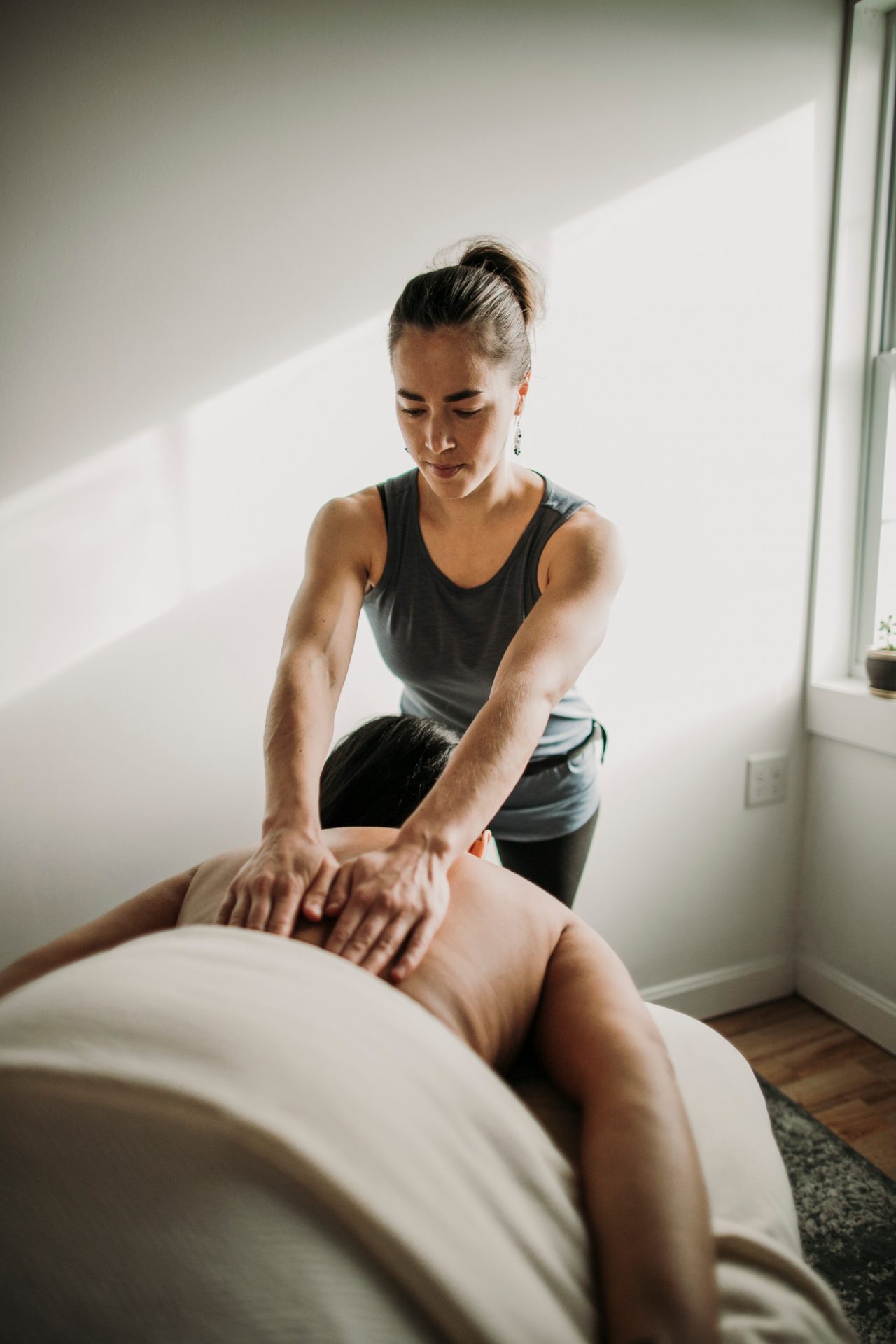Does sports massage actually help sore muscles?

Sports massages may feel useful, but do they actually help with sore muscles and post-workout recovery?
Lockdown taught us to prioritise our health, and it shows: since gyms and studios have reopened, body and brain-loving strength training has been the most-booked class on ClassPass. New stats from the booking site show that people are eager to get their hands on kit that will help us build strength and resilience, and we’re here for it.
But with all of that training must come recovery, and ClassPass’s research shows that is’ massage we’re all turning to in order to ease those well-worked muscles. The treatment is the most commonly booked session for those who do strength training classes, so much so that for the first time ever the wellness practice has made the top 10 most booked sessions.
You may also like
How can you help muscle recovery after strength training? Fitness trainers explain how to rebuild and repair
The question is: do they actually help, or just feel as though they do? In a bid to find out, I visited Kathryn Tilbury, a sports therapist at Third Space.
What are the benefits of a sports massage?
First up is, of course, muscle recovery. In a study from the Journal of Athletic Training, massage was shown to alleviate DOMS by approximately 30% and reduce swelling. A study published in the Journal of Sport Science also showed those who had a massage after training had a better recovery rate.
It’s not just about getting rid of post-exercise inflammation, but also general muscle pain and stiffness. As well as physically breaking down knots in muscles, sports massage has been shown to stimulate blood flow to treated areas to encourage healing, and in a small 2018 study, sports massage was shown to reduce non-specific low back pain in female weightlifters. However, there is limited research into massage, and while some people swear by it, others swear against it.

I personally find that I can feel my knots loosening as they are pressed, and I like having a hands on approach to my pain management (no pun intended). Booking in an hour of recovery time means I’m going to take it seriously, unlike if I just attempted to stretch or have a bath at home. Plus, being able to confirm my suspicions about my niggles with an expert is really useful. In my session with Tilbury, she explained the biomechanics of my spine, which muscles were weaker than others and why, and what steps I should take after to support my body and training.
For Tilbury, the benefits of massage come from it’s holistic practice. “When you have a massage you enter your parasympathetic state – this is your rest and digest, or heal and recover, state. It also stimulates your immune system and your hormonal systems to kickstart recovery,” she explains.
You may also like
Weight lifting and the nervous system: how strength training improves our brain pathways
The mental health side also shouldn’t be overlooked: “While sports massage may hurt more than a relaxing treatment, it’s great for stress management. You are lying in a dark room with nice music and scents, with someone working solely on your body,” says Tilbury. “Often, mental stress results in tissue tension and some people find they respond best to the physical release.”
Right now, that might be more important than ever. As bookings on ClassPass sore, so do Tilbury’s. “I think touch therapy is very important right now. We’re all craving it. And especially after getting a lot of aches and pains from lockdown lifestyles. Chemically, physiologically and mechanically, sports massage is really great for you,” adds Tilbury.
When should you get a sports massage?
A sports massage isn’t just reserved for those who are training heavily, but for anyone who could benefit from the physical and mental release. “I recommend them to anyone feeling overwhelmed, mentally and emotionally. Muscle aches and not recovering well between your workouts are also good reasons to book in,” says Tilbury.
How often you go really depends on your needs, she explains. “We suggest every four to six weeks for general health and wellness, but I also work with Crossfit athletes, Triathletes and marathon runners who come every one or two weeks when they’re in season. I try to work with the patients, rather than dictate to them how often they should come, as it’s important people listen to their own bodies.”
Before you book in for a session every few days, you might want to consider the fact that you shouldn’t be training for around 24 hours after a sports massage. As the muscles have just gone under a lot of load, it sometimes feels as though you have DOMS from an intense workout after a massage. Even if you don’t, the body needs time in the post-massage recovery state before you add the stress of exercise again.
Source: Read Full Article